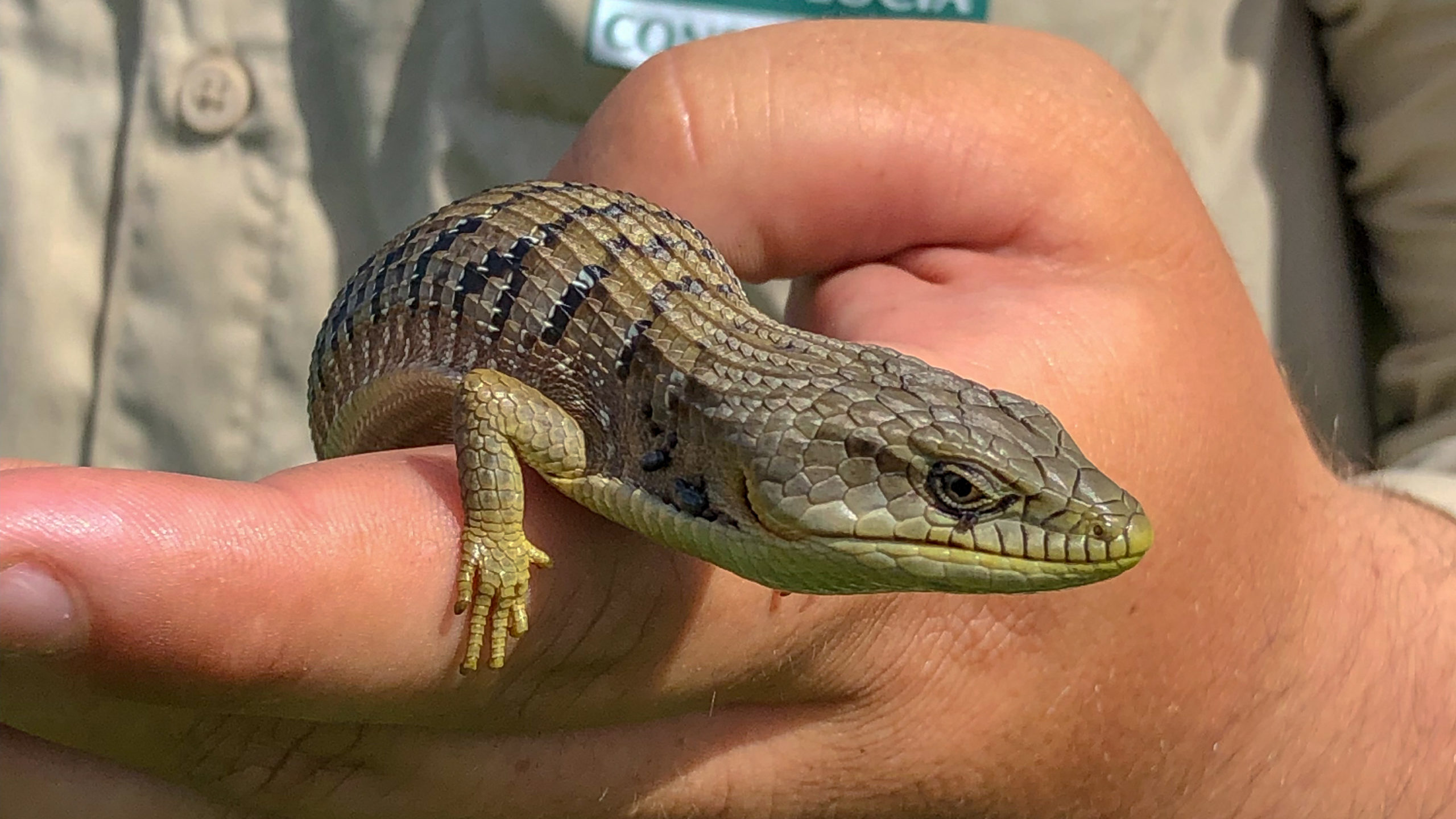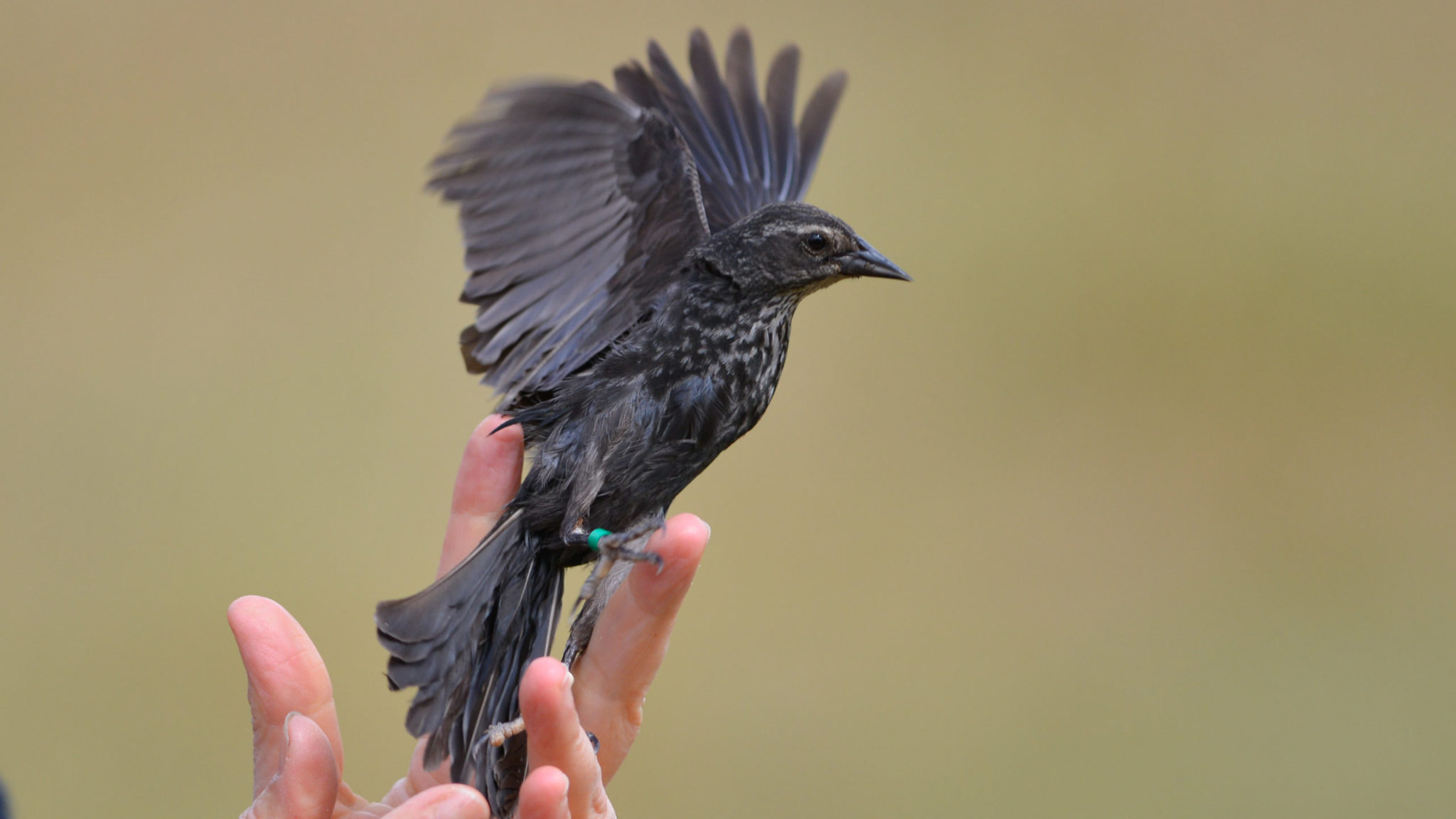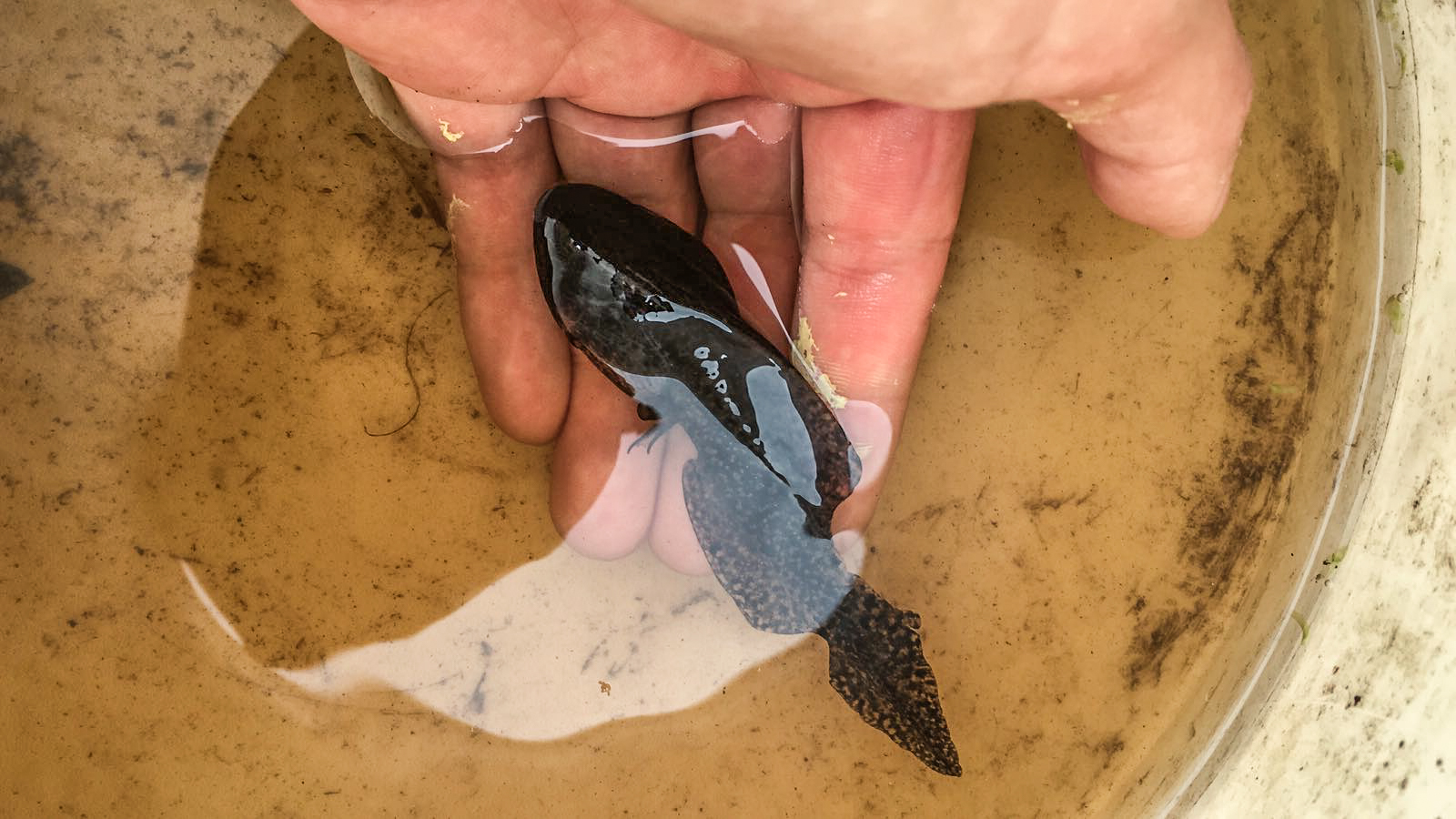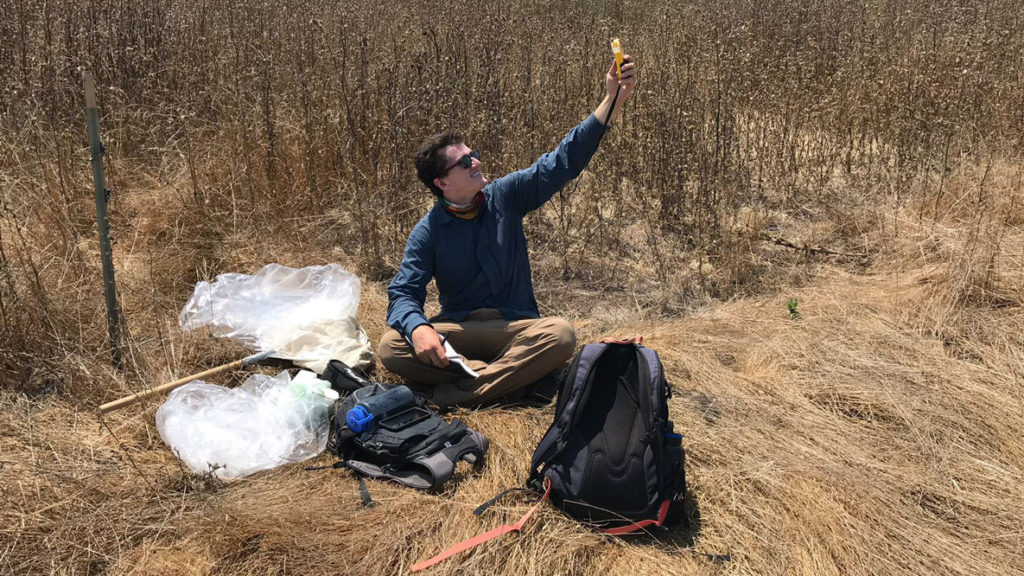I can’t believe the day we just had. Emerging from the pond, I reflect on our successful haul: California newts, aquatic garter snakes, vulnerable California red-legged frogs, hundreds of Pacific chorus tadpoles, a gorgeous alligator lizard I snatched from the grass at the water’s edge and too many giant water bugs to keep count. In the South giant water bugs, or Belostomatidae, are called alligator fleas and they’re even bigger than you’d imagine. The disappointment of not finding any vulnerable California tiger salamanders was obfuscated by my extreme excitement of the numerous acquisitions.
Ever since I could walk, I’ve been catching and admiring herps. Herps, short for herpetofauna, are reptiles and amphibians. And this summer I’m studying them for work, a real dream come true. Wading into ponds with dip nets and seins in search of vulnerable frogs and salamanders is part of the Santa Lucia Conservancy’s environmental DNA (eDNA) survey which aims to monitor and safeguard local populations of the two amphibians. While searching for and capturing herps in the fields of the Santa Lucia wilderness, we also gather samples of pond water to send off for processing. Amphibian DNA persists in these small ponds for a few weeks, so the lab will be able to inform us if any red-legged frogs or tiger salamanders evaded our nets and were in fact present.
As much as I love herps, eDNA sampling is just one of many long-term projects I am helping the Conservancy with during my summer internship. So far, every single day on the job has been unique and filled with unexpected surprises. One day I’m trapping, banding and releasing endangered tricolored blackbirds and the next I’m installing fencing for the cattle paddocks, learning about our Conservation Grazing Program. The Conservancy conducts myriad surveys and restoration efforts to protect threatened species and local habitat in the northern portion of the Santa Lucia Mountain Range. It is inspiring to observe how a very small, but very high-functioning team can make a big impact across 20,000 acres. And even though I am here to study conservation biology, some of my most important lessons come from participating in the weekly all-staff meeting each Monday where I gain insight into the functioning of a non-profit land trust. I overheard somebody describe our effort well. “At a small non-profit like ours, everybody does the work of at least two people.” At the meeting, we bounce ideas off of each other, sometimes suggestions compete with one-another, attaboys/girls are thrown around and ultimately, the team gets on the same page.
After three weeks into my internship I am feeling more oriented and start my own summer research. The Conservancy has two cattle herds that are strategically moved around The Preserve’s grasslands for conservation purposes. The goal in mind is to use the cattle to actually revitalize grasslands. The cattle eat the dead thatch and many of the invasive species, helping native grasses recolonize the land. My personal project is to compare insect diversity in the grazed plots versus adjacent plots of land that have purposefully never experienced any grazing. I’m sure most, if not all, ecoscientists would agree with EO Wilson’s assertion that insects are “the little things that run the world.” They are integral to the health of the world’s terrestrial ecosystems, so hopefully I find greater diversity in the grazed plots, bolstering support for the Conservancy’s conservation grazing efforts. If not, the survey could provide insight into what might need to be tweaked in the grazing program.
I’m very excited for everything to come at the Conservancy and can’t wait to bring what I’ve learned here to my future endeavors! Interning at the Santa Lucia Conservancy reinforces my desire to build my career plans around conservation and ecology. My experiences on The Preserve have strengthened my passion for the natural sciences and working outdoors. Equally importantly, my internship has shown me what I still wish to explore in future vocational endeavors.
BY TJ FRANCISCO
